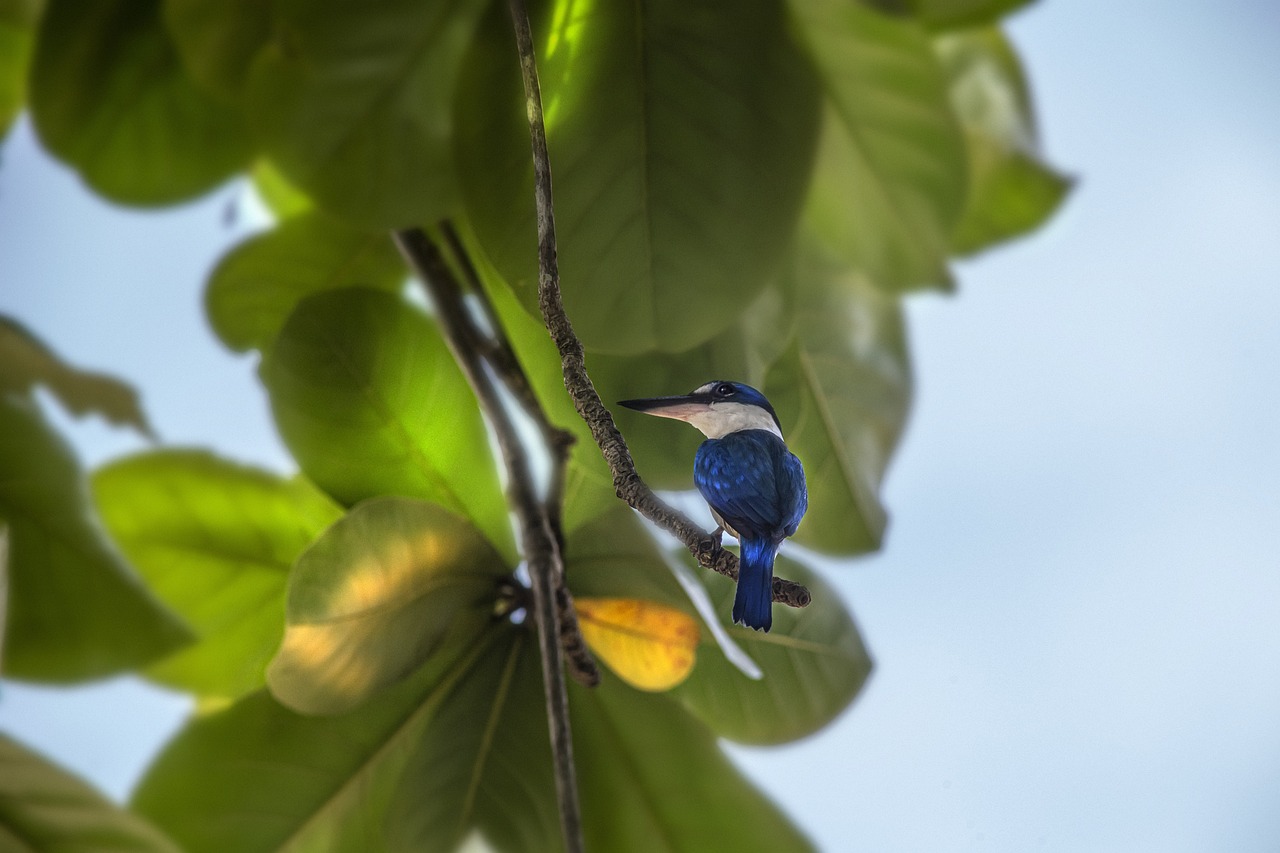The Collared Kingfisher (Todiramphus chloris), also known as the White-collared Kingfisher, is a medium-sized kingfisher known for its striking plumage and widespread presence across a variety of habitats.
Appearance
- Size: Collared kingfishers typically measure between 22 and 25 centimeters in length.
- Coloration: They have a distinctive bright blue-green back, wings, and tail. The head, throat, and underparts are white, and they have a noticeable white collar around the neck. The bill is large and black.
- Sexual Dimorphism: Males and females are similar in appearance, although males are generally slightly larger.
Habitat
- Preferred Habitats: Collared kingfishers are versatile and can be found in a wide range of habitats, including mangroves, coastal areas, woodlands, gardens, and agricultural lands.
- Geographic Range: They are widely distributed across the Indian Ocean and the Western Pacific, including Southeast Asia, northern Australia, and the islands of the Pacific.
Behavior
- Diet: They are carnivorous, feeding on a varied diet that includes insects, small crustaceans, fish, and small vertebrates such as frogs and lizards. They hunt from a perch, diving to catch their prey.
- Nesting: Collared kingfishers typically nest in tree cavities, termite mounds, or even burrows in banks. They lay around 2-5 eggs per clutch, and both parents are involved in incubating the eggs and feeding the chicks.
- Territorial: These birds are territorial and often seen alone or in pairs. They defend their territory aggressively against intruders.
Interesting Facts
- Vocalizations: They have a loud, harsh, and repetitive call, often described as a “kek-kek-kek” sound.
- Adaptability: The collared kingfisher is highly adaptable and has managed to thrive in a variety of environments, from coastal areas to urban settings.
- Longevity: In the wild, they can live for several years, with some individuals known to reach over a decade in age.
Conservation Status
- Population: The collared kingfisher is not currently considered threatened. It has a large range and a stable population trend.
- Conservation Efforts: Maintaining healthy coastal and mangrove ecosystems is important for their continued well-being. Efforts to preserve their natural habitats contribute to their conservation.
Identification Tips
- Coloration: Look for the bright blue-green back and wings, white collar, and white underparts which are the most distinguishing features.
- Size and Shape: Medium-sized with a robust body and large bill, typical of kingfishers.
- Habitat: Frequently found perched near water bodies, mangroves, and even in urban areas with suitable hunting spots.
Summary
The Collared Kingfisher (Todiramphus chloris) is a beautiful and adaptable bird found across a wide range of habitats in the Indian Ocean and Western Pacific regions. Its striking blue-green and white plumage, loud calls, and diverse diet make it a fascinating species to observe. With a stable population and widespread distribution, it continues to be a common sight in its native range.
Visited 711 times, 33 visit(s) today
Views: 1557
Subscribe to the newsletter:
